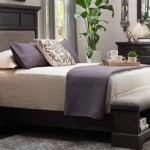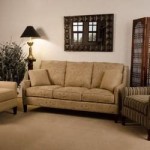Addressing White Spots on Wooden Furniture: Causes, Prevention, and Solutions
White spots appearing on wooden furniture can be a frustrating issue for any homeowner. These blemishes, often contrasting sharply with the rich tones of the wood, detract from the overall aesthetic and can lead to concerns about the furniture's condition. Understanding the causes behind these spots, coupled with effective prevention and remediation strategies, is crucial for maintaining the beauty and longevity of wooden furnishings.
These spots typically manifest as hazy, opaque circles or blotches, usually appearing on the surface finish rather than within the wood itself. The size can vary from small, barely noticeable specks to larger, more prominent areas, depending on the severity of the underlying issue. While the appearance can be alarming, in many cases, the problem is superficial and can be addressed with relatively simple techniques.
The primary culprit behind white spots is trapped moisture. When heat comes into contact with moisture on the surface of finished wood, it can create a chemical reaction that leaves these unsightly marks. This reaction affects the finish, specifically the top layers like varnish, lacquer, or polyurethane, creating a cloudy appearance due to the separation of the coating from the underlying surface. This separation creates microscopic air pockets that scatter light, resulting in the white, hazy appearance. The severity of the spots depends on factors such as the type of finish, the amount of moisture, the duration of contact, and the heat level involved.
Understanding the Root Causes of White Spots
To effectively address the issue of white spots, it's essential to identify the specific cause. Common sources include:
Moisture from Condensation: Cold beverages placed directly on wooden surfaces without coasters are a significant cause. The temperature difference between the cold glass and the warmer room air causes condensation to form on the outside of the glass. This moisture then seeps under the glass and becomes trapped on the wood finish, leading to white spots.
Heat from Hot Objects: Hot dishes, mugs, or cookware placed directly on wooden furniture can also cause these spots. The heat interacts with any moisture present on the surface, similar to the condensation effect. The combination of heat and trapped moisture can quickly damage the finish, creating the white, hazy appearance.
Spills and Splashes: Water, alcohol, or other liquids spilled on wooden furniture can penetrate the finish if not cleaned up promptly. The trapped moisture can then react with the finish over time, leading to the formation of white spots. Even seemingly insignificant splashes can contribute to the problem if left unattended.
Humidity: High humidity levels can also contribute to white spots, particularly in areas where the furniture is exposed to consistent moisture. While less direct than a spill or condensation, prolonged exposure to humidity can gradually affect the finish, especially if the furniture is already susceptible.
Preventative Measures to Safeguard Wooden Furniture
Prevention is always the most effective strategy when dealing with wood furniture maintenance. By implementing proactive measures, the likelihood of white spots appearing can be significantly reduced:
Consistent Use of Coasters and Placemats: This is the most basic and essential step. Provide an adequate supply of coasters and placemats and encourage their use. Opt for coasters made from absorbent materials like felt or cork, which can trap any condensation and prevent it from reaching the wood surface.
Prompt Cleaning of Spills: Immediately wipe up any spills or splashes on wooden furniture with a clean, dry cloth. Avoid abrasive cleaners, as they can further damage the finish. Use a soft, non-abrasive cloth to gently blot the spill, avoiding rubbing, which can spread the liquid and scratch the surface.
Controlling Humidity Levels: In areas prone to high humidity, consider using a dehumidifier to maintain a more consistent and manageable moisture level. This is especially important for valuable antique furniture or pieces with delicate finishes. Ensure proper ventilation in rooms with wooden furniture to prevent moisture buildup.
Applying Protective Finishes: Periodically applying a high-quality furniture polish or wax can help protect the finish from moisture and heat. Choose a product specifically designed for the type of finish on the furniture (e.g., oil-based, water-based, lacquer). Always test the product on an inconspicuous area first to ensure compatibility and avoid any adverse reactions.
Remediation Techniques for Existing White Spots
While prevention is ideal, white spots can still occur. Fortunately, several remediation techniques can be employed to address the issue. The best approach depends on the severity of the spots and the type of finish on the furniture.
Hair Dryer Method: This method is often effective for minor white spots caused by trapped moisture. The gentle heat helps to evaporate the moisture, allowing the finish to rebind.
- Set a hair dryer to its lowest heat setting.
- Hold the hair dryer a few inches away from the affected area.
- Move the hair dryer back and forth slowly over the white spot for several minutes.
- Check the spot periodically to see if it is disappearing.
- If the spot persists, repeat the process, increasing the heat setting slightly, but always being cautious not to overheat the finish.
- Once the spot is gone, apply a furniture polish or wax to the area to restore the shine.
Ironing Method: This method is similar to the hair dryer method, but it uses the controlled heat of an iron to evaporate the trapped moisture.
- Set an iron to its lowest heat setting without steam.
- Place a clean, dry cotton cloth (like a t-shirt) over the white spot.
- Gently iron over the cloth in a circular motion for a few seconds at a time.
- Lift the cloth and check the spot periodically.
- Repeat the process until the white spot disappears.
- Be careful not to overheat the finish or to apply too much pressure, which could damage the wood.
- After the spot is gone, apply a furniture polish or wax to the area.
Mayonnaise or Petroleum Jelly Method: These substances can sometimes draw out moisture from the finish.
- Apply a generous amount of mayonnaise or petroleum jelly to the white spot.
- Let it sit for several hours or overnight.
- Wipe away the mayonnaise or petroleum jelly with a clean, soft cloth.
- Buff the area with a clean, dry cloth.
- This method may require several applications to be effective.
Using Specialized Furniture Polishes and Restorers: Several commercial furniture polishes and restorers are specifically designed to remove white spots and other blemishes. Follow the manufacturer's instructions carefully when using these products. Always test the product on an inconspicuous area first to ensure compatibility.
Refinishing or Professional Restoration: If the white spots are severe or if the aforementioned methods are ineffective, refinishing the furniture may be necessary. This involves removing the existing finish and applying a new one. Refinishing is a more complex process that requires specialized skills and equipment. Consider consulting with a professional furniture restorer for valuable or antique pieces. A professional can assess the damage and recommend the most appropriate course of action, ensuring that the furniture is restored to its original beauty without causing further damage.
When dealing with valuable or antique furniture, consulting with a professional furniture restorer is always recommended. Improper cleaning or repair techniques can cause irreversible damage and diminish the value of the piece. A professional can assess the condition of the furniture, identify the type of finish, and recommend the most appropriate course of action.

How To Remove White Stains From Wood

Learn How To Remove Hazy White Stains On A Wood Table Adorn The

Learn How To Remove Hazy White Stains On A Wood Table Adorn The

Say Goodbye To Hazy White Stains On Your Wood Table Quick Easy Solution Youtube

Photo Quiz What Are These White Spots On The Wood Floor Business

How To Remove White Heat Marks On Furniture Jenny Komenda

Furniture How Do I Remove White Beverage Stains From My Dark Finished Wood Table Home Improvement Stack Exchange

White Spots Showing Up On Wood Floors

How To Remove A White Heat Stain From Wood Furniture Youtube

How To Remove White Stains From Wood
See Also








